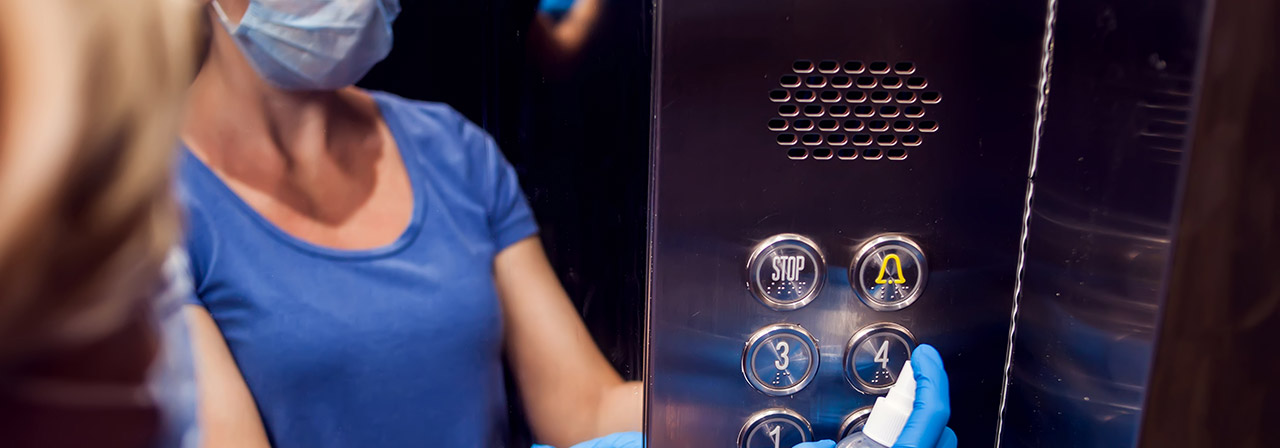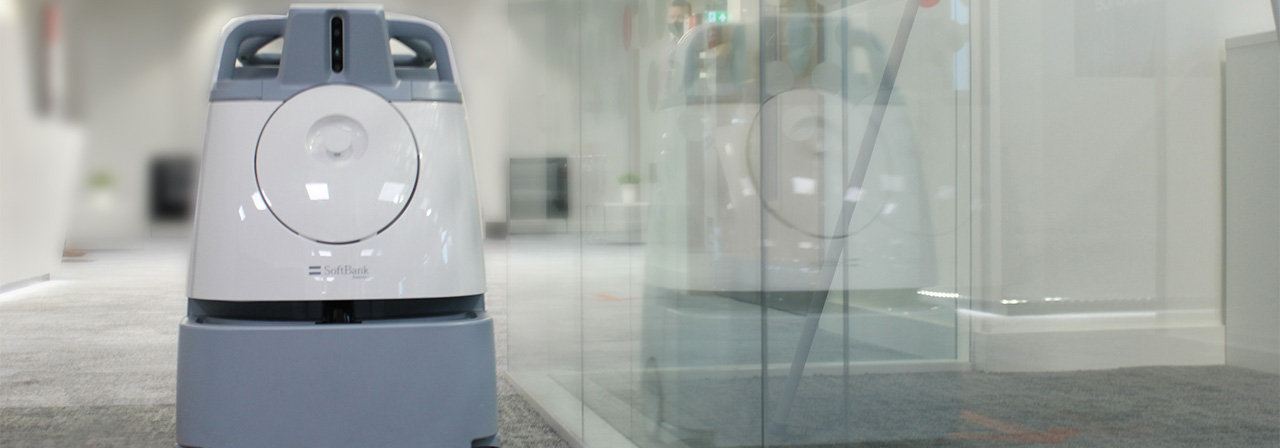How office cleaning is going the extra mile
Traditional cleaning methods are being upgraded amid heightened expectations around hygiene
Keeping today’s workplaces clean involves far more than vacuuming the carpets and clearing away used coffee mugs at the end of the working day.
Hygiene standards in offices have never been higher to reduce the spread of viruses – and new approaches involving robots, sensors and new tools for existing cleaning teams are coming into play.
Landlords and corporates are more focused than ever on cleanliness, air quality, spacing and touchless solutions, says Heather Spearman, JLL’s executive vice president and director of operations for Midwest Property Management, Americas. “Frequent, ongoing disinfection and certified, enhanced cleaning strategies are at the forefront.”
In the U.S., 80 percent of businesses consider cleanliness and sanitation their top concern when managing COVID-19 risks for employees, customers and the public, according to Avidbots, which has seen a 100 percent increase in demand for its floor cleaning robots since the pandemic reached North America.
Technology makes its mark
They’re not the only robots lending human colleagues a hand. More than 10,000 BrainOS autonomous vacuums are now deployed in supermarkets, malls, airports and hospitals. Also powered by BrainOS, Softbank Robotics’ Whiz is joining the growing market as their use in the office gathers pace, with more than 15,000 in operation globally.
Other robots are sanitising frequently used spaces whether through spraying disinfectant in the air or emitting ultraviolet light that kills viruses.
“The benefits of robots are starting to be appreciated as they take on the strain of physically demanding tasks while helping to meet enhanced safety standards, says Peter Whyte, a divisional director at JLL's Integral business.
Nils Van der Zijl, vice president of sales and marketing at Softbank Robotics EMEA, says that while robots can help reduce the man-hours spent cleaning, interaction with humans remains key. Whiz is a collaborative robot, or cobot, which works in conjunction with human operatives in terms of learning routes and alerting their human counterpart if attention is required.
“It’s a partnership; the human aspect is fundamental to the success of robotic cleaners,” he says. “There’s broad range of tasks within cleaning operations, from surface cleaning to smaller areas, beyond the heavy lifting that robots can take on.”
Sensor technology that measures occupancy levels of different areas of the workplace is another growing area.
“We’ve all booked meeting rooms and not used them; likewise, we’ve often just wandered into an empty meeting room to take a quiet call,” says Whyte. “Data coming from calendar-based software may not always be correct.”
Instead, smart building platform, Infogrid, collects data via 4G and the cloud, from tiny stick-on IoT sensors attached to doors and desks to report back which spaces have been used and when they need cleaning. And in heavily used areas of the workplace such as bathrooms, breakout areas and kitchens, technology can also help notify cleaning teams of anything from soap shortages to a blocked toilet.
“This heralds a shift away from traditional hourly or half-daily checks without impacting on cleanliness levels,” says Whyte.
Rethinking traditional cleaning rotas
Having fewer people in the office as more work remotely is equally impacting cleaning schedules.
On the one hand, tasks such as large-scale cleaning which involve moving furniture or high noise levels – and which are normally done out of hours – can now be done on quiet days. On the other, enhanced cleaning standards require a greater focus on heavily used areas during busier times.
“There’s an emerging need for higher staffing levels at midweek peak times,” says Stuart Wilson, a divisional director at JLL's Integral business. “While the presence of cleaners during office hours may have been seen as a disruption in the past, now it’s more important than ever to be on site in more concentrated spells to ensure hygiene levels remain continuously high and limit the risk of spreading viruses among desk-based workers and maintenance staff.”
New tools, such as telescopic cleaning brushes with cameras on the ends, are able to reach higher into nooks and crannies and detect previously overlooked dust. At the same time, products used by cleaning teams are changing, as companies place greater onus on sustainability.
Companies now expect greener cleaning products which do less harm to the environment, explains Wilson. “That can range from de-ionised water for external and internal glass cleaning to eco-products for surface areas,” he says.
Maintaining standards
For now, many offices are significantly quieter than usual and maintaining the highest possible hygiene standards is an imperative but even once vaccines are fully rolled out and more people venture back to the workplace, cleanliness will remain a top priority to reassure employees.
“Clean airflow and sanitised surfaces remain a key concern and will be for the foreseeable future,” Wilson says.
Greater investment in maintaining standards could help to make robots a more common sight on office floors but there’ll still be a need for cleaning personnel.
“There will always be a role for people to do the more complex tasks,” says Wilson. “This pandemic has certainly made desk-based employees appreciate the work that cleaning personnel do but it’s clear that robots are now closer than ever to becoming their helping hand.”

